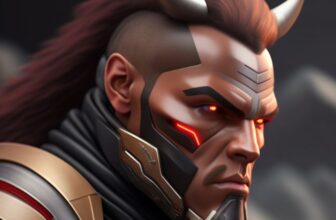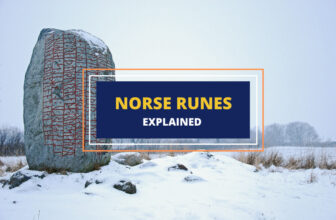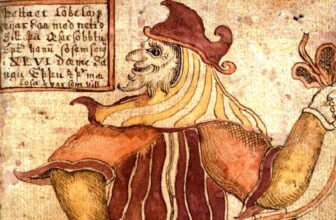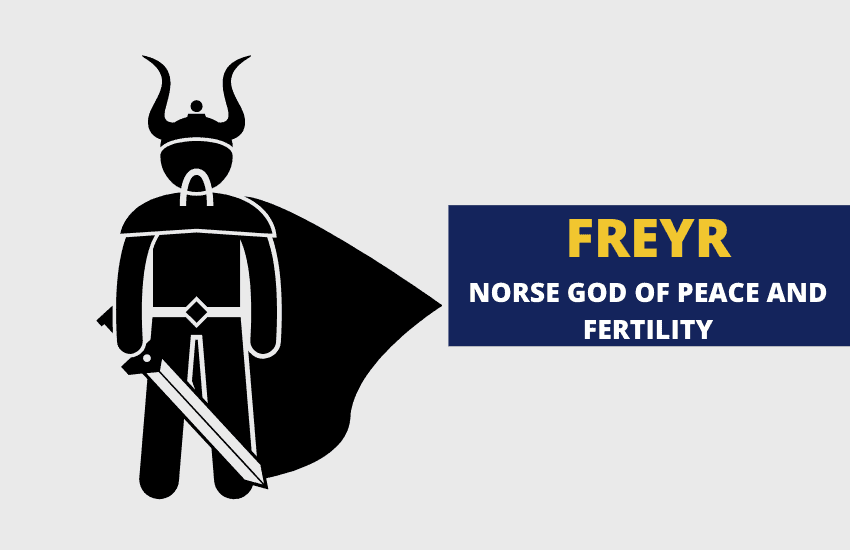
Table of Contents
Freyr is one of the main Vanir gods in Norse mythology but he was also accepted as an honorary Æsir (Asgardian) god in Asgard after the Æsir-Vanir War. A twin brother of Freya and a son of the sea god Njord, Freyr can be seen as the Vanir equivalent of the Asgardian gods Thor and Baldur.
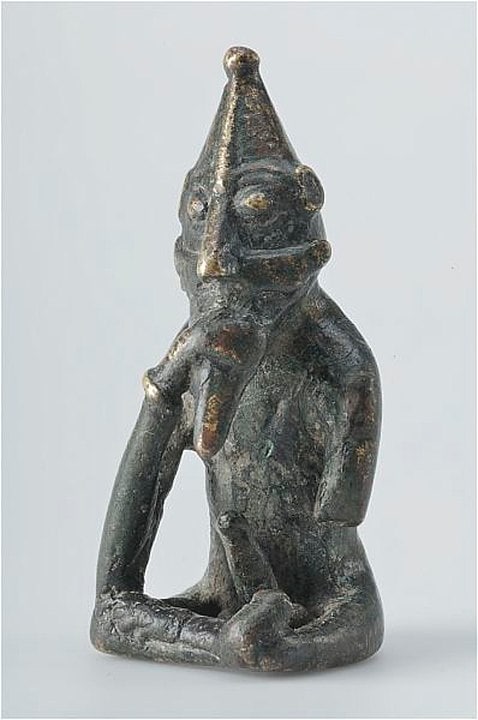
Who is Freyr?
Freyr is the Norse god of peace, virility, fertility, prosperity and sacral kingship. He’s also associated with good weather, sunshine and a bountiful harvest.
Often portrayed as a handsome man in simple hunting or farming clothes, he’s usually accompanied by the dwarven-made boar Gullinbursti (Golden-Bristled). Freyr’s name literally translates to Lord from Old Norse and it’s sometimes anglicized as Frey.
Like most other Vanir gods, Freyr is a peace-loving deity that refrains from needless battles and war. His twin sister Freya, while also a peaceful goddess, was more active as the protector of the Vanir realm and was also viewed as a defender/war goddess.
During peaceful times both twins were worshipped as gods of both sexual and farming fertility, peace, and love. Statuettes with Freyr’s image were most often crafted in phallic shapes and he’s even said to have had sexual relations with Freya even though the two had other marital partners.
Freyr – Æsir vs. Vanir Gods
Even though he was a peaceful deity, like his sister, Freyr didn’t hesitate to stand up and defend the Vanir gods when need be. He took part in the great Æsir-Vanir War between his fellow Vanir gods and the war-loving (and more famous today) Asgardian gods.
The main difference between the two Norse pantheons, from a historical point of view, seems to be that the Vanir gods were mostly worshipped in Sweden and the other Scandinavian countries, while the Asgardian pantheon was worshipped in both Germanic and Norse societies. This would suggest that the two pantheons started out as separate religions as is often the case with ancient polytheistic religions and were eventually combined.
Freyr in the Æsir-Vanir War
The Æsir-Vanir War acts as the mythological metaphor for the merger of the two pantheons as it ended with a peace treaty after which the Vanir gods Njord, Freya, and Freyr were invited to Asgard to live on as honorary Æsir deities.
This is where some myths begin to contradict others.
According to most myths, Freyr and Freya were sons of Njord and his unnamed sister (the Vanir gods apparently had a thing for incest) and fought with their father in the Æsir-Vanir War. According to other myths, they were born from the marriage between Njord and Skadi, the Æsir goddess/giantess of hunting and mountains, i.e. – the twins were born after the Æsir-Vanir War.
From the two versions, the accepted myth is that Freyr and Freya were the children of Njord and his sister and arrived in Asgard with him.
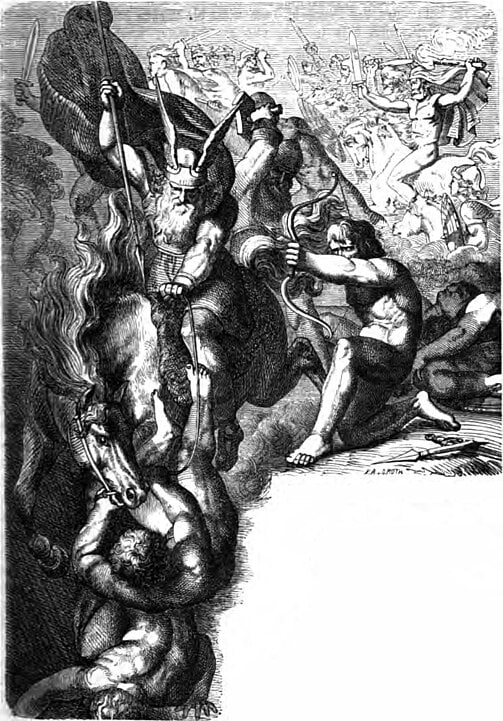
Freyr as Ruler of Elves
After the Æsir-Vanir War, Freyr was given dominion over the realm of the elves, Álfheimr. In Norse mythology, elves are seen as some sort of semi-divine beings that are closer to the gods than to humans. They are often seen at feasts with the gods and are usually ascribed positive characteristics and morals, although there are exceptions.
Either way, as a ruler of Álfheimr, Freyr was worshipped as a good and loving king who brought peace and bountiful harvests to his people.
For that, Freyr, whose name translates to Lord, is viewed as a god of sacral kingship. Peaceful and beloved Nordic and Germanic rulers were often associated with Freyr.
Freyr’s Wife and Sword
In most myths, Freyr is said to have married the female jötunn (or giantess) Gerðr after joining the Æsir gods in Asgard. To win Gerðr’s hand, however, Freyr is asked to give up his sword – a magical and powerful weapon which was said to be able to fight on its own if wise be he who wields it.
Freyr gives up his sword to Skírnir, his messenger and vassal, and marries Gerðr with whom he lives a long and happy life in Álfheimr. He never picks up a sword again and instead fights with an antler, on one occasion defeating the jötunn Beli with that improvised weapon.
Freyr’s Death
Like most other gods, Freyr dies in the final battle Ragnarok. During this battle, will be killed by the unstoppable jötunn Surtr who is largely responsible for Ragnarok itself and for the fall of Valhalla. Freyr has to fight the mighty jötunn with an antler again as he never manages to regain his sword.
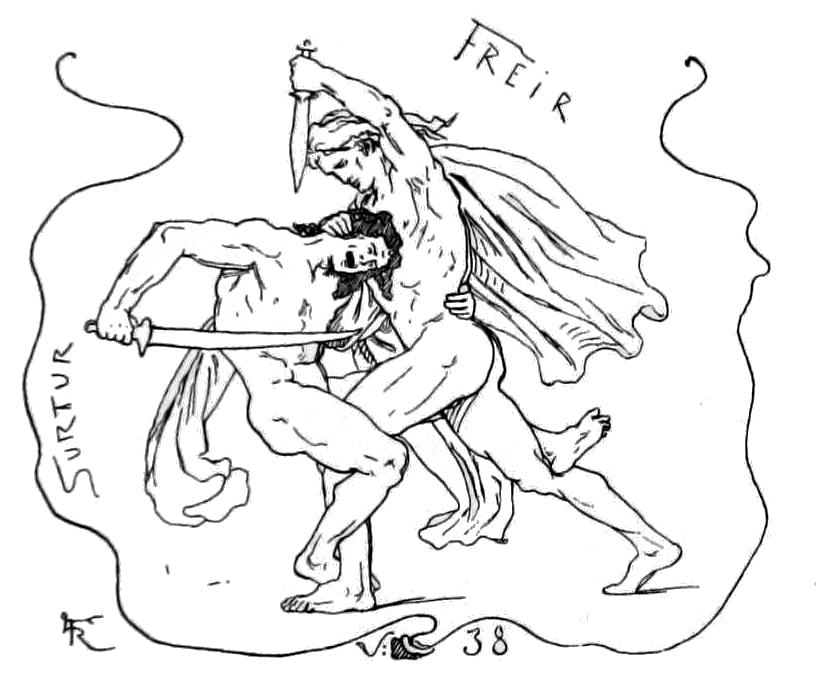
Symbols and Symbolism of Freyr
As a god of peace, love, and fertility, Freyr was one of the most beloved deities in Scandinavia and the Nordic cultures. People today often associate Norse mythology with the Viking age and with constant wars and raids but that wasn’t always the case.
The majority of the Nordic people were simple farmers and hunter-gatherers and for them, Freyr represented everything they wanted from life – peace, bountiful harvests, and an active love life. This makes him a very clear Vanir counterpart to the Æsir gods Baldur and Thor, the former associated with peace and the latter with fertility.
Freyr and his sister Freya were so beloved by the people that even after the Nordic and Germanic cultures intermingled and the two pantheons merged, the two peace-loving siblings found prominent places in the Asgardian pantheon and continued to be worshipped all across Northern Europe.
Freyr’s sacred animal is the boar and he’s often depicted with his boar by his side. Gullinbursti represents Freyr’s role as providing abundance to his people. Freyr also rides a chariot drawn by boars.
Another symbol of Freyr is the phallus, and he’s often depicted with a large, erect phallus. This strengthens his association with fertility and sexual virility.
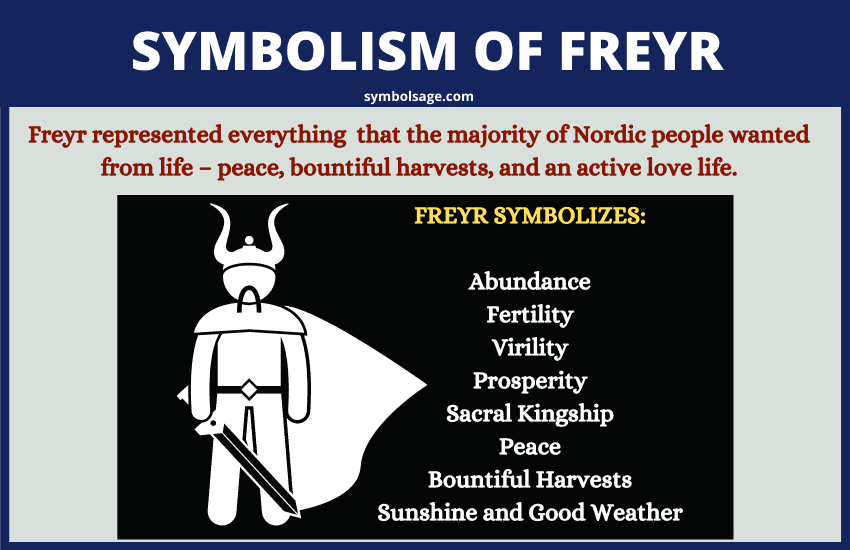
Importance of Freyr in Modern Culture
Like his sister Freya and like other Vanir gods, Freyr is very rarely mentioned in modern culture. The result of the Æsir-Vanir War may have been a “tie” and a peaceful truce but the Æsir gods clearly won the “culture war” as they are far more famous than their Vanir counterparts today.
Freyr was often mentioned in many poems, sagas, and paintings in the middle ages when he was one of the most popular and beloved Norse gods. However, his role in modern culture is minimal.
Wrapping Up
Freyr was one of the most beloved and important gods of the Norse and Germanic people, who often offered sacrifices to him. He was held in high esteem and worshipped across the lands.




